Calisthenics is a form of strength training that uses body weight to improve endurance, flexibility, coordination, and strength. Calisthenics comes with a range of exercises with different intensity. This type of training suits beginners the best and can be easily modified for advanced workouts.
With all the variety of trendy fitness forms such as Tabata, fly yoga, Zumba, Crossfit, and so on, calisthenics seems an old-school term that is long forgotten. In fact, you probably already do calisthenics without actually realizing it! What’s your immediate response when you decide you need that 6-pack? Crunches. What does every girl pray on to get a bigger butt? Squats. What are those guys doing in the park? Pull-ups and “around the world.” And these are all calisthenic exercises. Surprised?
Calisthenics includes a wide range of motions such as pulling, pushing, jumping, swinging, bending, et. This form of exercise is widely accepted in educational establishments and the military as a collective rhythmic and synchronized form of exercise. We all get to know it at an early age, but most don’t know the exact definition.
What Is the Purpose of Calisthenics?
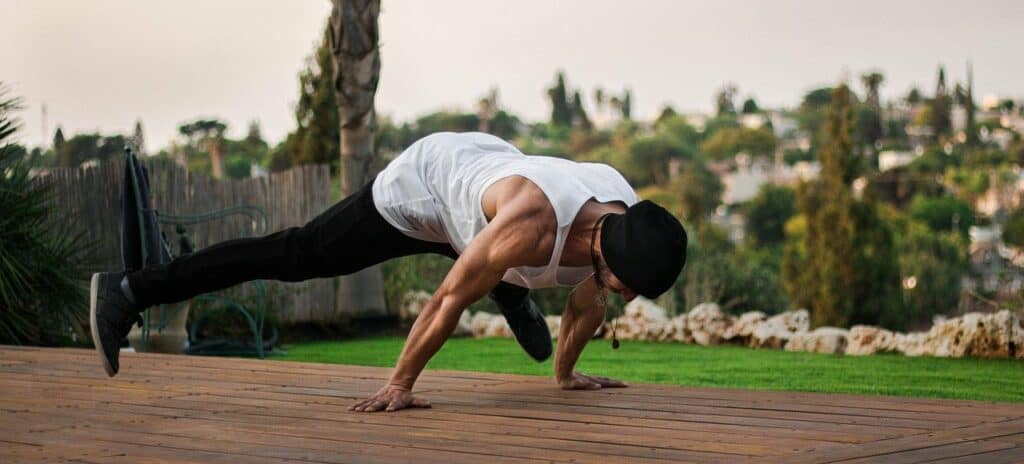
Calisthenics usually engages large muscle groups. It works with bodyweight to provide muscular and aerobic conditioning and effective exercises that target overall body health.
The purpose of calisthenics is simple – improve your overall physical health. It originally was introduced in Greece as the general fitness meant as a helping hand in “beauty and strength” – the literal translation. It comes with many aspects that surpass strength, such as coordination, stamina, mobility, stability, flexibility, and so on. Calisthenics maintains the health of your joints, ligaments, and tendons, thus lowering injury risks during other fitness forms.
Which Is Better: Calisthenics or Weight Lifting?
Calisthenics hit every single muscle of your body! Every! And you can build serious strength in a few years of consistent and advanced training.
Considering the overall engagement of your muscle strength and endurance, calisthenics is often used as a baseline for evaluation of physical prowess in military institutions.
How to Start Calisthenics?
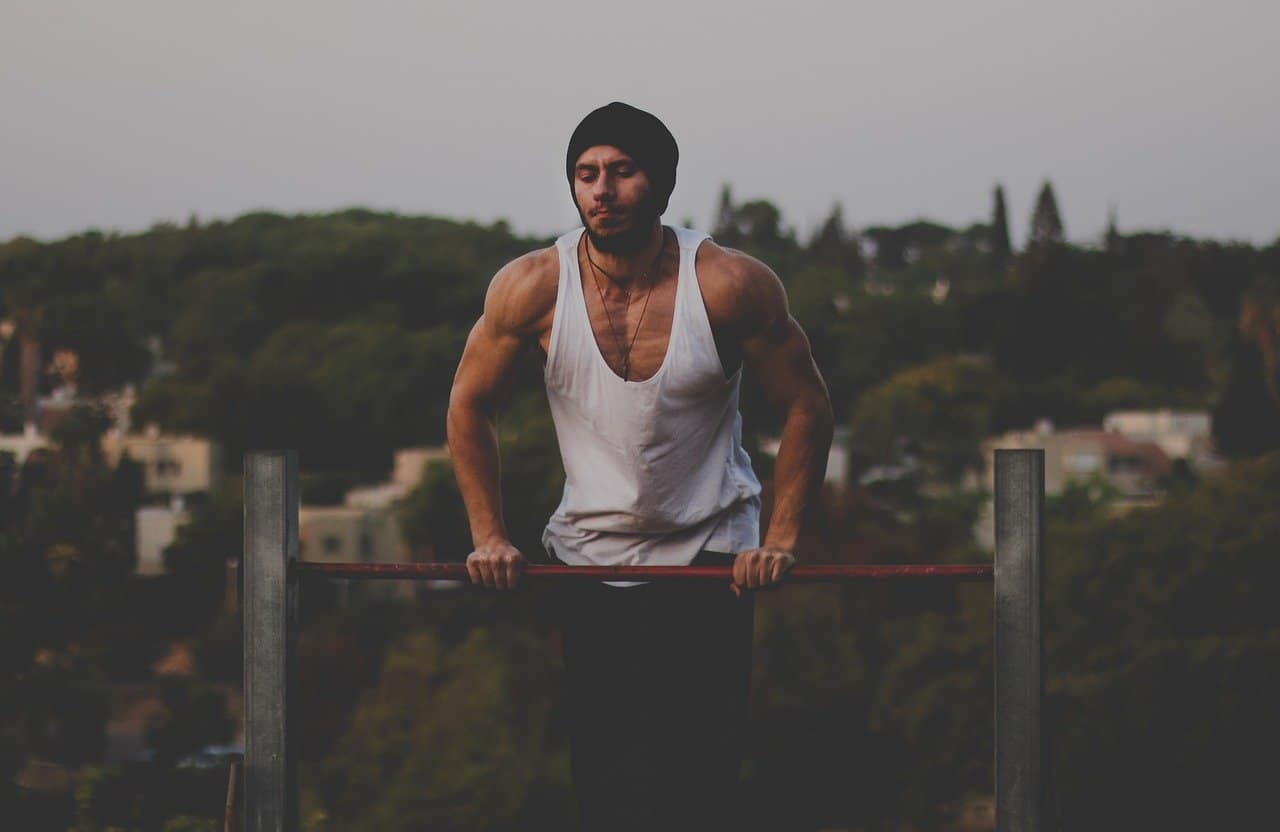
Starting calisthenics is fast and easy as you’ve already taken up to it during some points in your life. The easiest advice is to just start at any moment, when you feel you are ready to blow some steam with something physical. Calisthenics is perfect for beginners if you are afraid that you won’t be able to raise your legs above the head or some other cool stuff you’ve seen athletes do.
Equipment. For calisthenics, you don’t need equipment! Probably just a mat of sorts or a simple duvet to feel comfortable with doing some exercises. Yes, basic equipment c such as bars can be used, but they are not obligatory.
Basics. Start with the basics. You don’t need to try anything fancy right from the start. Start with the foundation: pull-ups, push-ups, crunches, lunges, dips, squats, and so on. They are relatively easy to perform and master the technique. From there, you’ll move to more advanced exercises.
Push yourself. Bodyweight exercises do not mean that everything should be super easy as you just use your body. You will find it hard. And you’ll need to push your body not to be stuck in your own fitness comfort zone.
What Are Calisthenics Exercises?
Calisthenic exercises are numerous. There are at least a few different exercises targeting each muscle group. Thus, you can imagine the magnitude of this category!
You can use the following sequence as an exemplary full-body set (which can also be a part of HIIT workout for beginners.)
Pull-ups
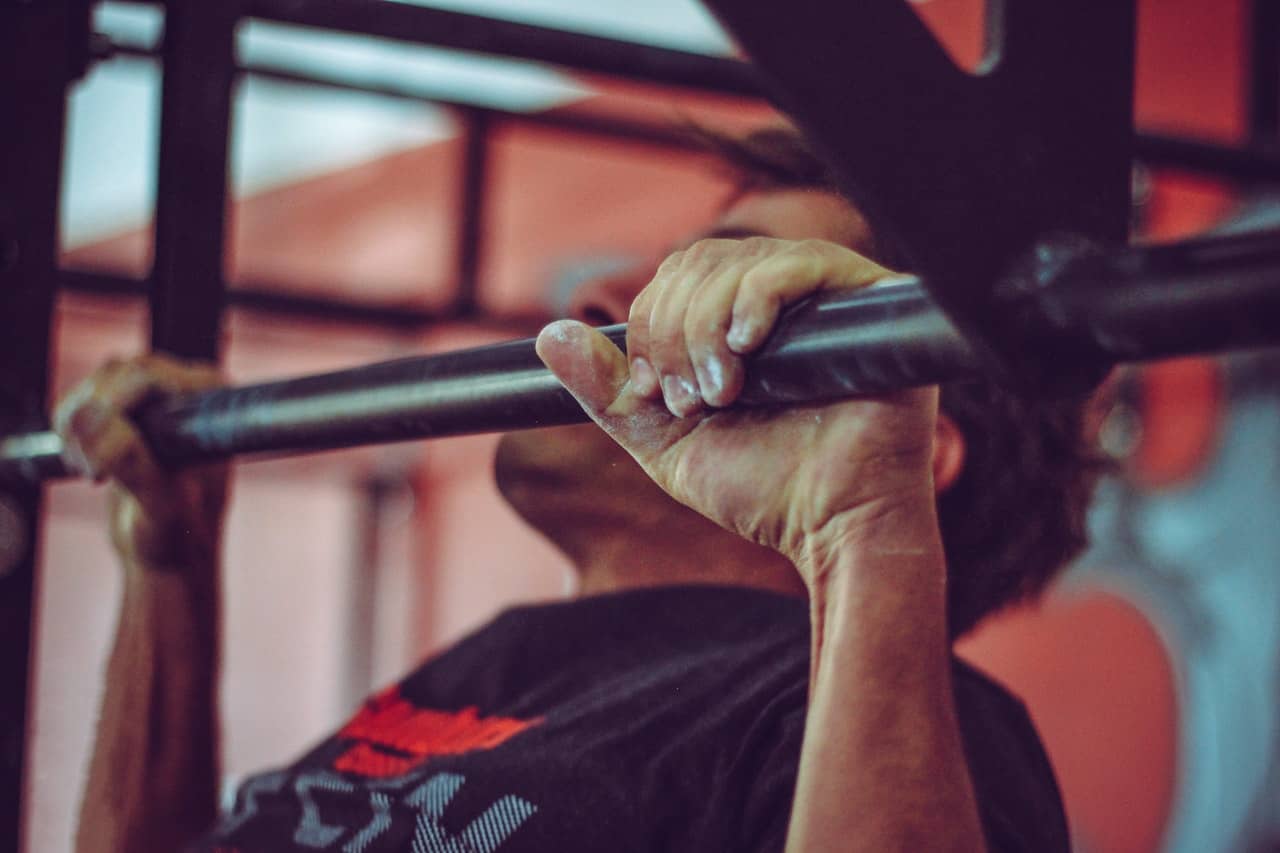
For a beginner, pull-ups are a challenging exercise mastering which is a big achievement. Your initial pull-up goal would be 5 for women and 10 for men. For a beginner, this is a great start.
11 Benefits of Pull-Ups You Could Be Missing Out On
How to do:
- Grip a bar from the top a bit wider than shoulder-width apart.
- Engage your upper body muscles to pull yourself up and reach above the bar with your chin.
- Slowly lower to the initial position; feet don’t touch the ground.
This completes one pull-up. To ease your pull-up training, if you cannot master even one yet, you can use an assisted pull-up machine in the gym.
Plank
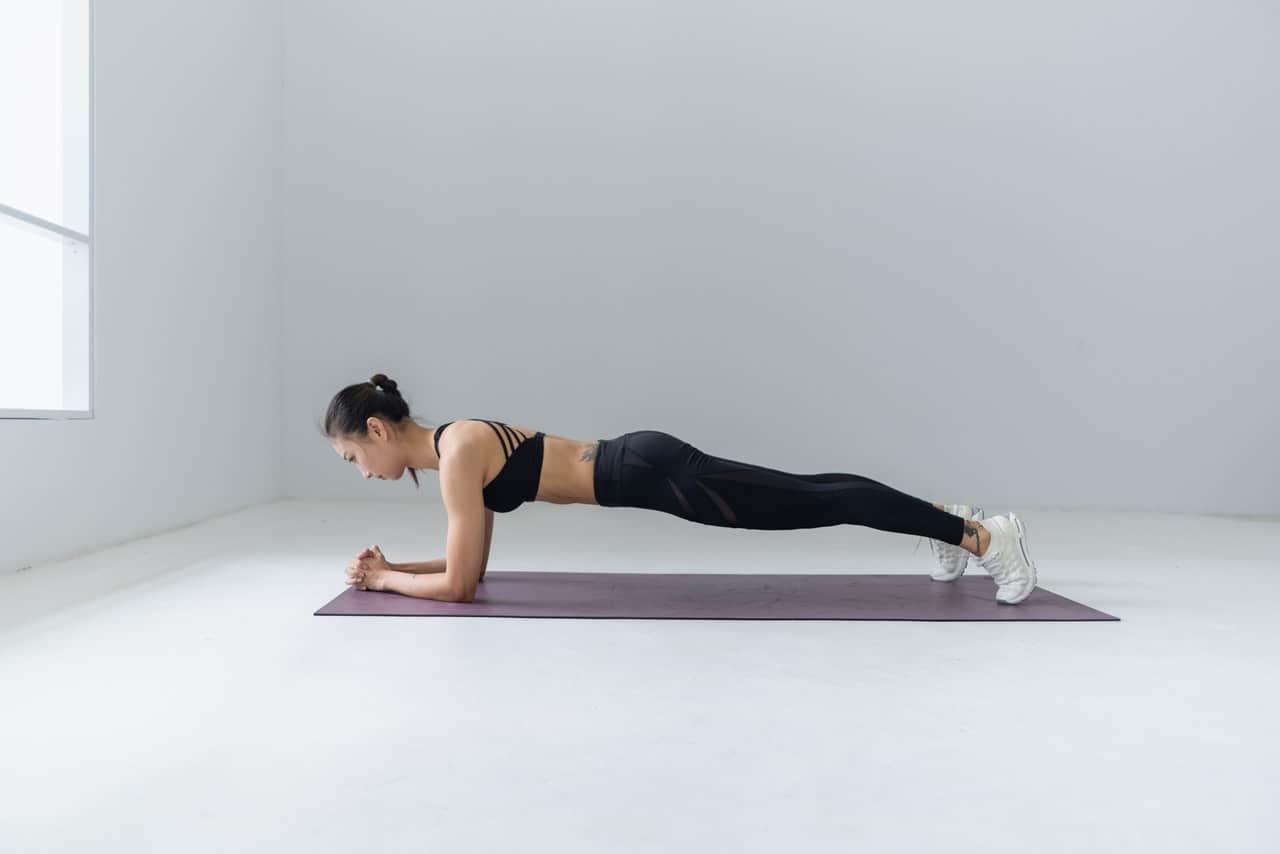
With planks, you need no equipment to make the exercise harder. You’ll be surprised how hard it is to support just your body weight in the proper form. Plank engages your core mainly and a variety of muscles secondary. It improves your posture and increases durability.
How to do:
- Start in a push-up position.
- Lower on your forearms. Elbows directly under your shoulders.
- Tuck in the pelvis a bit to form a straight line from your heels to head.
- Hold for 30-60 seconds, depending on your abilities.
In time, diversify this exercise with different plank variations such as the high plank, side plank, and active plank workouts like a mountain climber.
Squats
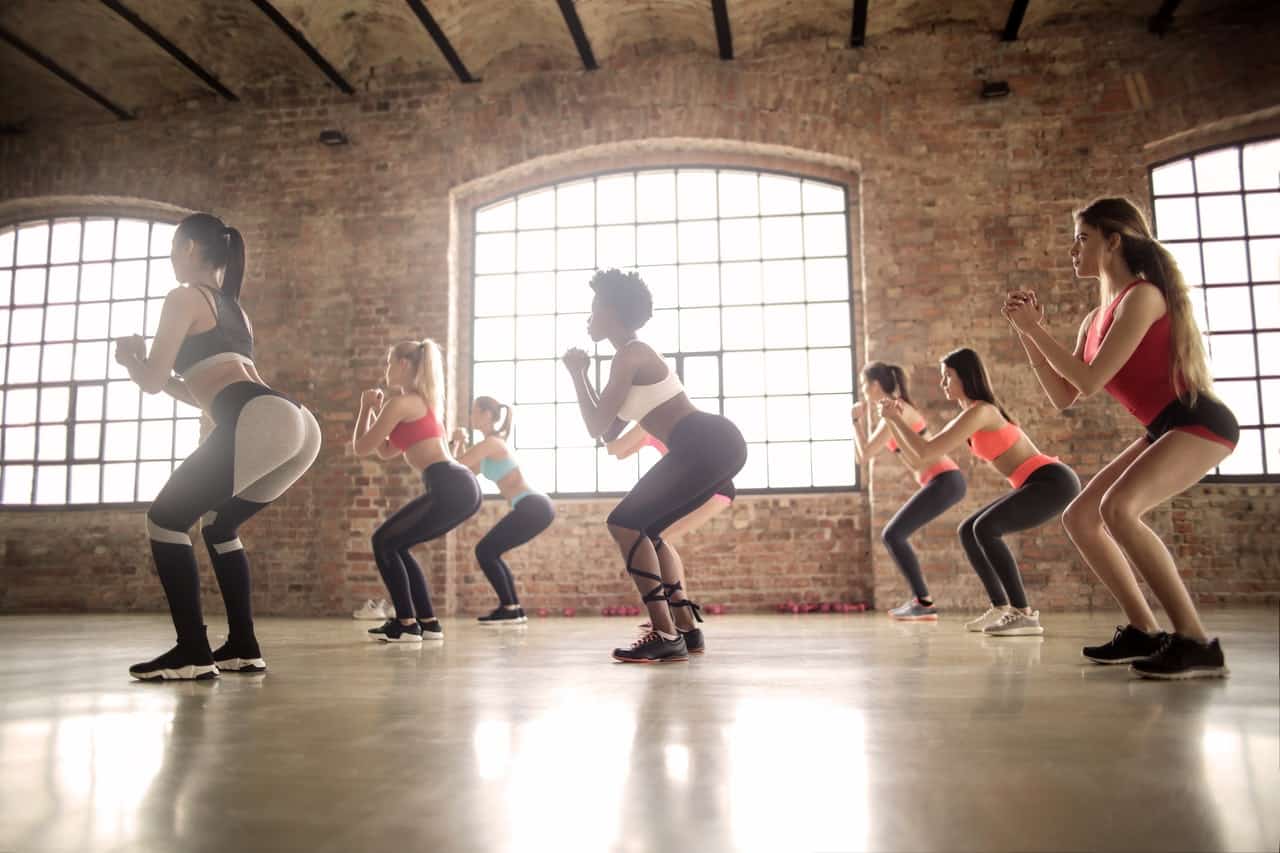
To a firm butt and strong legs, squats are the basic exercise that engages your lower body. Although there are more effective workouts for glutes, squats firm your peach as well. And strong legs are a fine support for your whole fitness performance.
How to do:
- Stand with your feet shoulder-width apart.
- Bend your knees and “sit back” with your hips. Keep your back straight; weight on the heels.
- Lower to form about a 90-degree angle; hold for 0,5 seconds.
- Rise back up and squeeze your glutes as you stand straight.
The regular training should include around 3-4 sets of 10-12 reps.
Burpees

This is a full-body workout exercise that engages all of your muscles and doesn’t require additional equipment. It’ll sweat you on its own. Burpees combine the previous exercises into one hell of a set.
How to do:
- Start from the squat position and do a squat down.
- Put your hands down to the ground in front of you.
- Move your weight to the hands and gently jump your feet back in a high plank position.
- Complete one push-up.
- Jump your feet forward to your hands.
- With your whole body, just up to a couple inches off the ground, raise your hands up.
This completes one burpee. Repeat this exercise for 3-4 sets of 10-12 reps. To make them a bit easier, remove the push-ups and just stay in a plank for a second or two.
5 Best Free Chris Heria Workout Programs (For All Levels)
As a more complex body sequence, you can take this effective video workout by the calisthenic professional and influencer, Chris Heria.
Is Calisthenics Better Than Gym?
Is this bodyweight training better than the gym? For our current time of an epidemic and on-and-off gym lockdowns, the answer is definitely yes. Calisthenics is super easy to practice at home as you require no equipment, and little space is needed for a full-body practice.
For a beginner, calisthenics offers a low injury prone way to learn the proper techniques of the basic exercises. For more advanced athletes, calisthenics may be lacking in complexity, though.
However, there is no need to separate the two. You can easily combine your calisthenic workout with typical gym exercises with weights and machines.
Conclusion
Calisthenics is an effective form of training that is most suitable for beginners. It comes with low injury risks and high effectiveness. If your purpose is to boost your overall health, strength, and physical performance, calisthenics is perfect for you. For many people, bodyweight exercises are the introduction to a healthy lifestyle.
 Fact checked by
Fact checked by